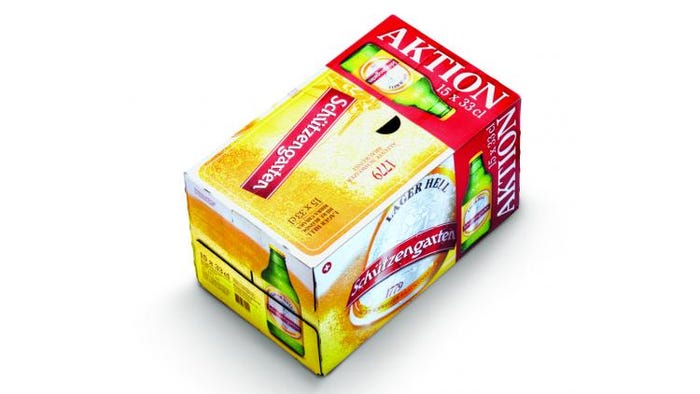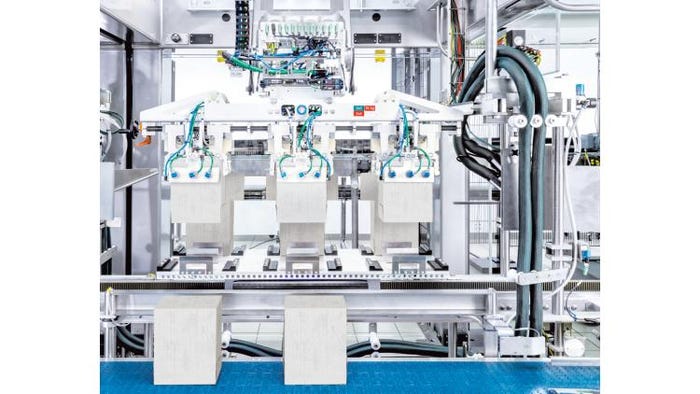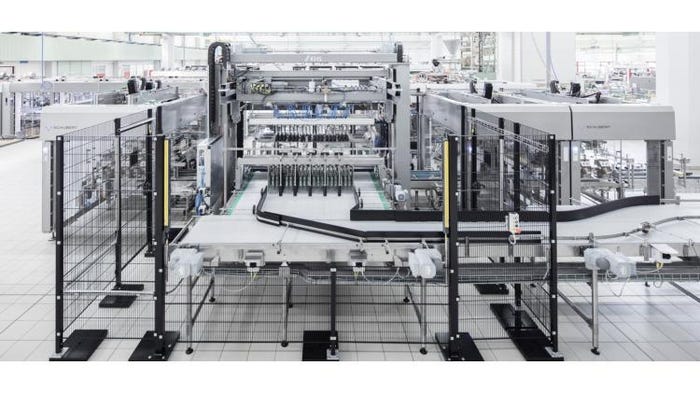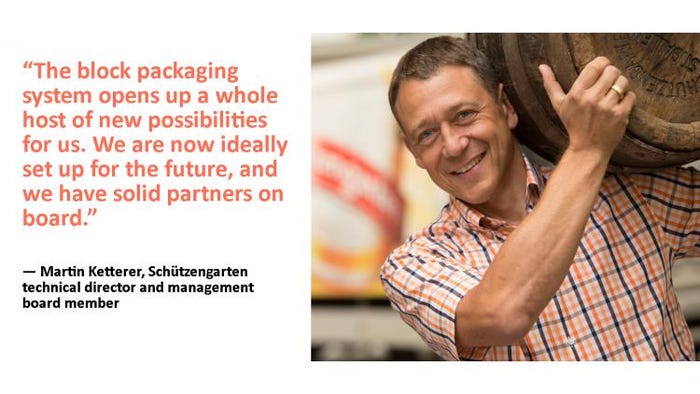Brewery's new secondary packaging system handles 13 formats
For the ultimate in production flexibility and floor-space utilization for its secondary packaging operation, Switzerland’s Schützengarten brewery recently installed a robotic cartoning system that nearly doubled the output of multipacks.
This is the first installation of the compact Innopack TLM system jointly developed by Schubert and KHS. It combines mechatronic modules (blocks) for carton erecting and sealing with a robotic packer. By integrating the individual modules with a Transmodul robot connector, the need for additional transport units are eliminated, which saves floor space.
The plant produces 175,000 hectolitres (about 4.6 million gallons) of beer annually. Currently, 11 different bottle formats are being packaged on the block system: seven reusable containers and four disposable bottles.
The company can create a variety of secondary packages on the system—13 in all: 4-, 6-, 8-, 10-, 12-, 15- and 18-pack, as well as six different classic beer crates. “The development of packaging variants has been explosive in recent years—we just cannot ignore what the market wants,” says Martin Ketterer, technical director and member of the Schützengarten management board.


Schützengarten stands out among its competitors with package designs that come in different shapes and sizes, including bespoke and embossed bottles, as well as in a variety of multipacks.
How does the system deliver such flexibility? In this case, a Transmodul robot is the mechanical transport link between the KHS packer and the Schubert modules. The Transmodul uses a connector to move into the KHS packaging machine. Thanks to the inductive power supply and wireless transmission of data and signals, the Transmodul can move freely.
The system was installed on a tight schedule—just three weeks from dismantling the previous system to final commissioning of the new one—so the plant could get back into production as soon as possible. In doing so, Schubert and KHS satisfied customer requirements for the two-shift operation. “We’re extremely happy with our investment. With us, KHS and Schubert have acted as a single unit and the new block has been running right from the start with no difficulties whatsoever,” says Ketterer.

Robots provide product-friendly handling, thanks to their gripping technology.
In the first TLM module, the cartons are erected, glued and set down on the Transmodul, which moves them into the KHS packaging module. Here, bottles are automatically inserted into cartons in the right quantity and configuration. Subsequently, the filled cartons are passed by the Transmodul to the TLM sealing modules, where F2 robots seal them.
Because of the system’s design—which doesn’t include long infeed and outfeed sections—maintenance, energy consumption, and machine wear and tear are reduced.
Also, with this block packaging solution, Schützengarten can now use the filling capacity to its fullest extent, even in a tight space. This results in an almost doubled line capacity compared with the previous packaging solution. The line now runs at from 25,000 to 35,000 bottles per hour (about 400 to 580 bottles per minute).

The new secondary packaging line allows the brewery to run its filling operation at its highest speed.
The integrated system uses a single control panel and changes over in less than 15 minutes. It is even possible to convert the format on the Schubert modules for cartons while simultaneously producing plastic crates on the KHS packer.
It’s easily scalable too. Retrofit expansions for additional types of packaging, such as cluster packs or baskets, can be done with little effort.
“The block packaging system opens up a whole host of new possibilities for us. We are now ideally set up for the future, and we have solid partners on board,” says Ketterer.
Founded in 1779, Schützengarten might be Switzerland’s oldest brewery, but it is using the newest packaging technology to stay competitive.

************************************************************************************************
See a host of new ideas in packaging machinery, materials and more at MinnPack 2017 (Nov. 8-9; Minneapolis). Register today!
About the Author(s)
You May Also Like




